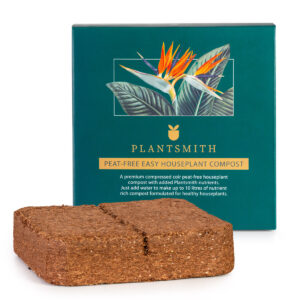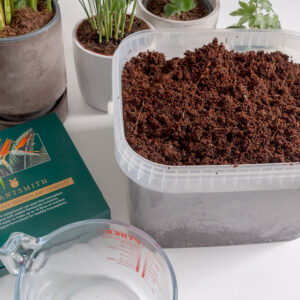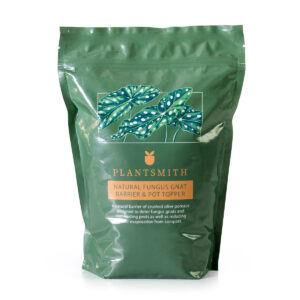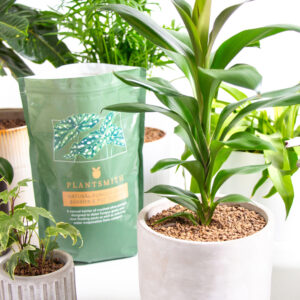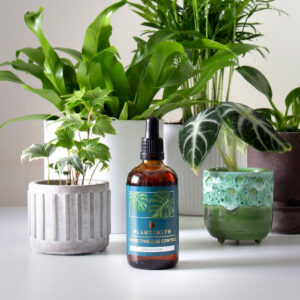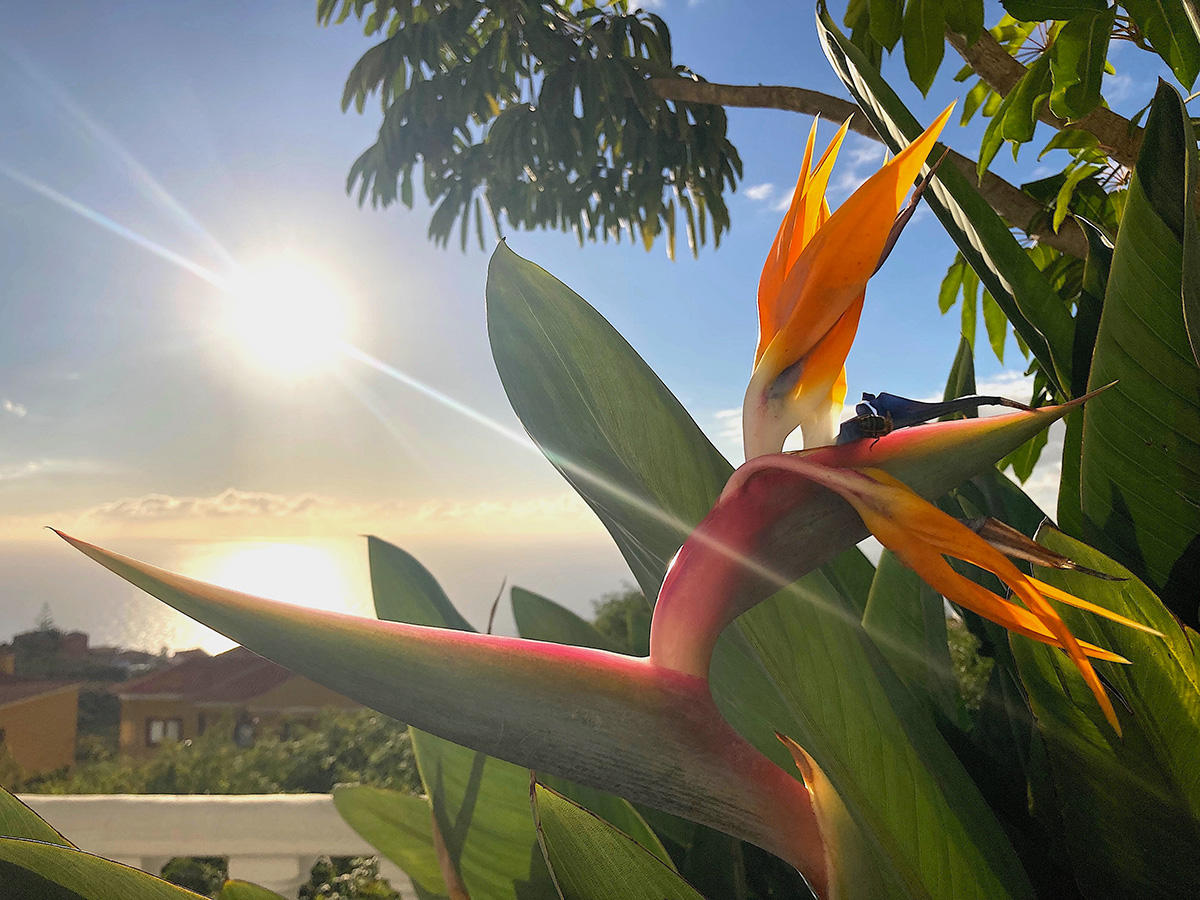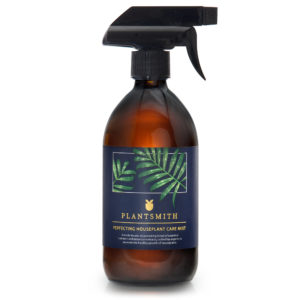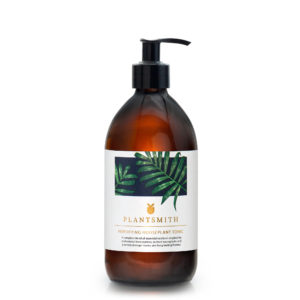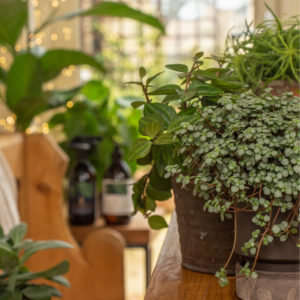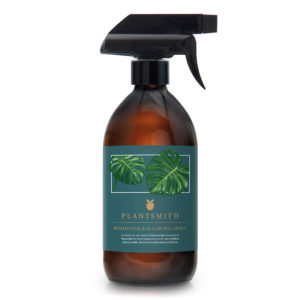From the first time I saw Bird of Paradise, Strelitzia, on a family holiday to Tenerife in the 80’s, I was mesmerised. It was also the first time I had ever ventured abroad and the combination of foreign travel and exotic plants, alien to our little Sussex village back home, was enough to blow my young mind.
What makes Strelitzia so special? Lengthy, evergreen foliage fan out from the base to surround flamboyant plumes which appear straight out of a scene from the Land That Time Forgot. Resembling the plumage and beak of a crane, stems are strong enough to actually support the weight of birds; originally South African sunbirds, sugarbirds and the Cape weavers, that help pollinate this plant although there is some debate about whether the birds actually disperse pollen or simply rob the nectar, but fused blue petals form a sturdy perch as the birds reach in for their nectar reward.
Strelitzia reginae is the most commonly known Strelitzia, this Bird of Paradise produces bright orange flowers and whose foliage can reach 2m tall; cultivar ‘Mandela’s Gold’ boasts striking yellow flowers and is a little more compact at 1.5m height whereas Strelitzia nicolai and augusta / alba also known as wild banana, have white blooms and can become a giant of a plant, eventually reaching up to 10m so you need a bit of space to fully appreciate them.
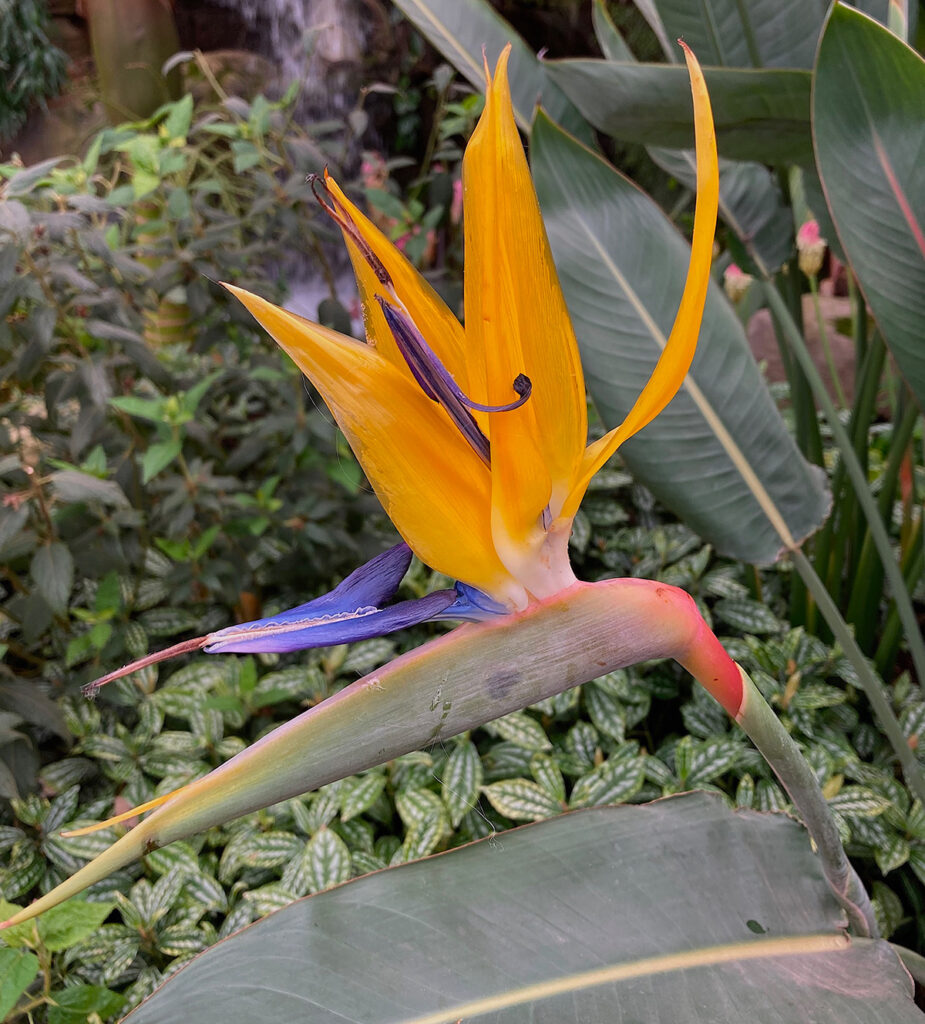
These perennial plants originate from South Africa, on the eastern coast from Humansdorp to northern KwaZulu-Natal but can be found growing naturally throughout the Canary Islands, proudly becoming the symbol of Tenerife and national flower of Madeira.
In UK climes, Strelitzia make exotic houseplants but how do you keep foliage fresh and flowers blooming? Here are some tips.
Water
Strelitzia need a bit of attention to keep them healthy. Water weekly in the growing season after the soil has dried out and regularly mist to keep moisture and humidity levels up; avoid waterlogging. Mist with rainwater or Plantsmith Perfecting Houseplant Care Mist to not only provide moisture but also essential nutrients.
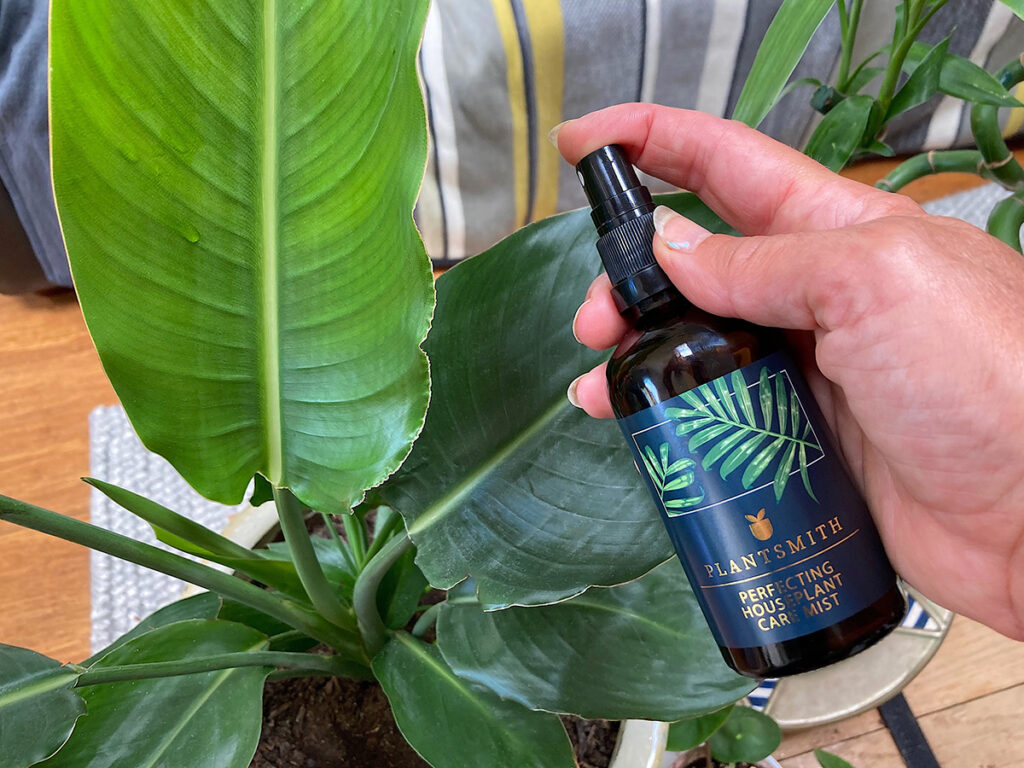
To water you can submerge the pot in a bowl of rainwater, leave it soaking for five minutes and then let it drain or use a watering can to top water. If you do not have access to rainwater boil the kettle, pour water into an open container and leave for 24 hours so tap water chemicals like chlorine and fluoride can evaporate.
Light
Strelitzia need lots of light. In South Africa they grow in full sun so a bright room is essential but be aware their leaves will scorch in intense sunlight.
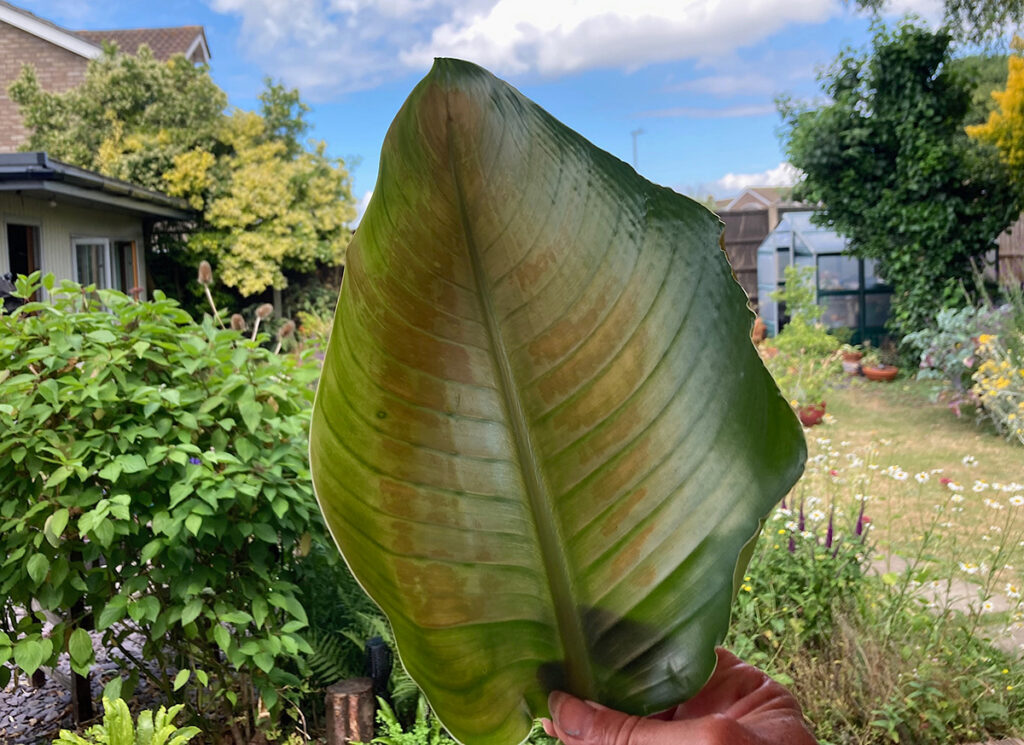
Temperature
Strelitzia favour warmth and humidity. They are not hardy but can tolerate short periods of low temperatures, but it is preferable to keep temperatures above 10-12°C (50-54°F) at night.
Situated in their South African habitat along river banks and coastal thickets, they enjoy temperatures ranging from 15°C – 26°C (60°F – 80°F) so keep your plant happy in a warm spot away from cold drafts.
Once outdoor temperatures are consistent you can give your houseplant a holiday and pop it outside to soak up some dappled rays, just don’t leave it to fry in intense sunlight.
Inside, group pots of houseplants together to increase humidity and spray plants with a fine mist of Plantsmith Perfecting Houseplant Care Mist or rainwater. Misting will temporarily increase humidity and counterbalance the dry air of our homes.
Soil
A free-draining soil is important. Use a houseplant or cactus potting mix or combine compost with orchid bark or coir, sand and perlite to create a balance of organic matter which easily drains. This will help air circulation around the roots by keeping soil light and aerated rather than compacted. Repot Strelitzia every couple of years.
Fertiliser
Feed every two weeks to keep Strelitzia foliage green and vibrant. Houseplants rely entirely on us to feed them so ensure the formula you give them is in tune with houseplant’s needs.
Try Plantsmith’s Fortifying Houseplant Feed & Tonic which has been blended to provide a perfect balance of potassium, iron, magnesium, kelp and essential macro and micro nutrients to encourage healthy foliage and growth. Importantly, it contains the optimum ratio of nutrients for houseplants; over fertilising can be detrimental to plant health.
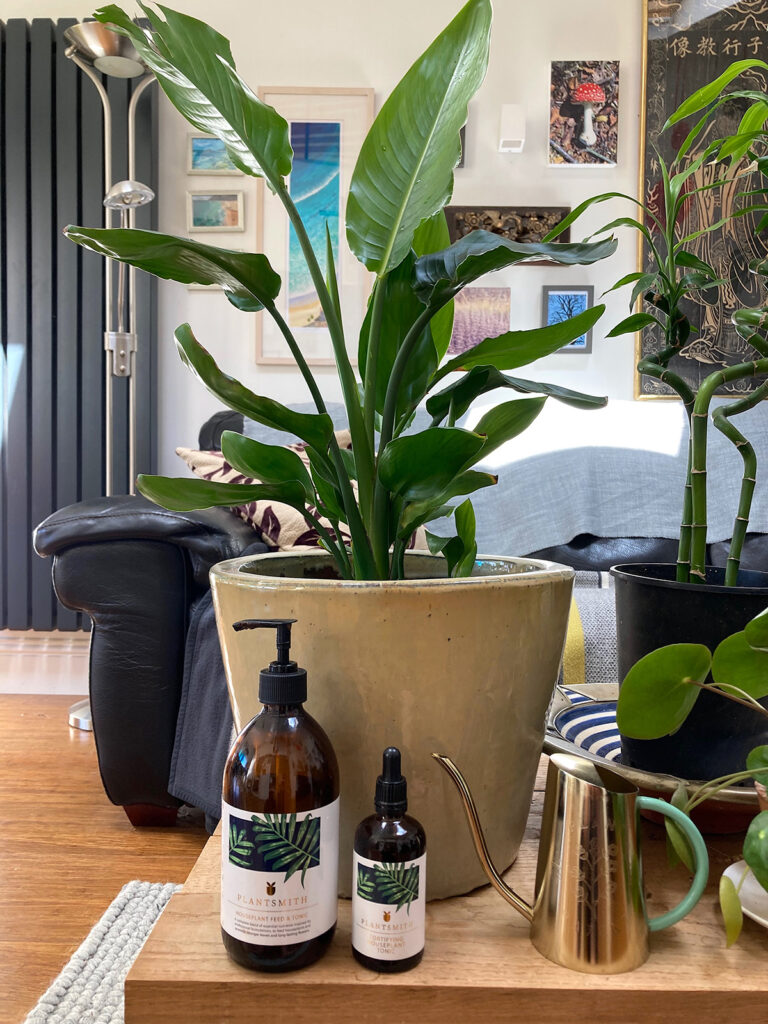
Shake the bottle to ensure all nutrients are evenly mixed then add 5 ml (approx. 4 pumps) from the 500ml bottle or dilute one pipette from a 100ml bottle into a litre of tepid rainwater and apply.
Plants carry out all their chemical reactions in solution so soluble food saves the plant wasting energy breaking down material before they can use it.
Flowering
In the UK Strelitizia flower from late winter to early spring, providing a carnival of early colour, reminding us summer is not far away. Be aware, only mature plants will flower so patience is needed; it could take a few years to see any floral action.
Problem Solver
Brown or grey spots appearing on leaves could signify fungus Botrytis cinerea, Grey Mould whose airborne spores thrive in high humidity whereas Powdery Mildew favours dry, hot conditions and forms dusty white spots on leaves. Isolate the plant and remove affected leaves. Make sure plants have good ventilation, reduce feeding and humidity, and avoid wetting leaves.
Be aware Strelitzia are toxic to cats and dogs if eaten so keep out of harms way.
Pests
Houseplant pests are annoying but common so try and prevent attacks by using Plantsmith Protecting Bug Control Spray which will also boost the plant’s vigour. This protective spray blends natural surfactants alongside iron chelate, manganese chelate and magnesium. This 100% vegan, natural formula helps deter pests as well as providing plant nutrients.
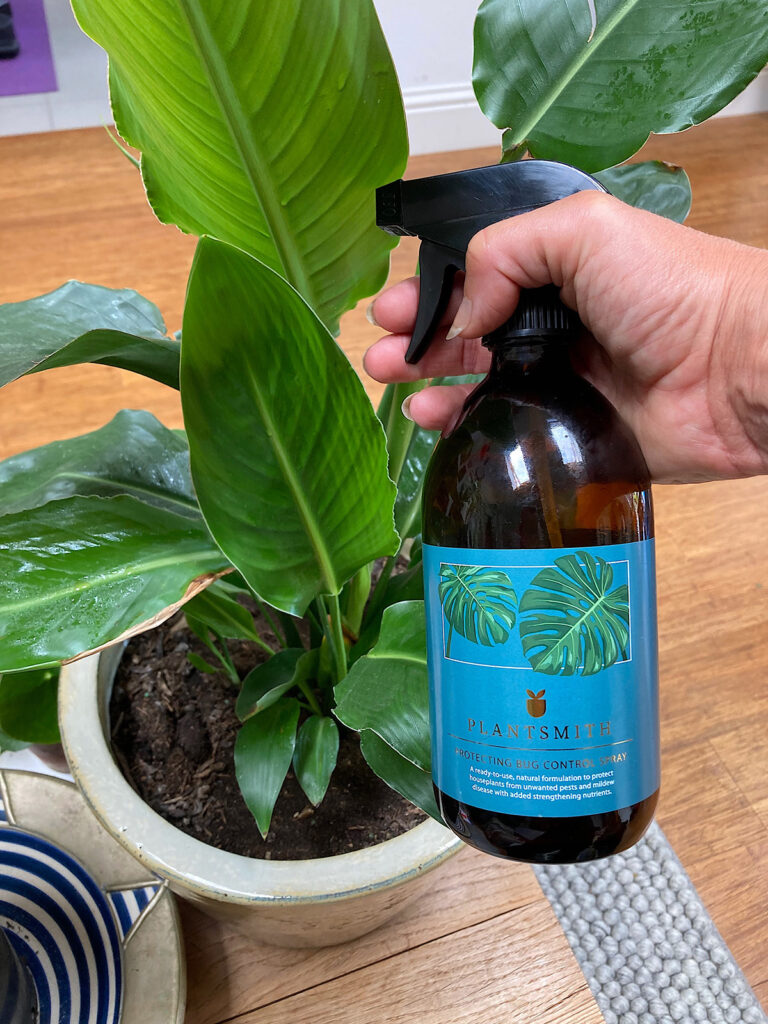
Keep an eye out for mealy bugs, spider mites, fungus gnats, and scale insects. If found, deal with the infestation quickly to stop it spreading as pest attacks can weaken plants. As well as watering and feeding, houseplants rely on us to keep the pests indoors at bay so regularly check plant leaves and stems for unwanted visitors.
Treat fungus gnat infestations with a biological control; water the soil with parasitic nematodes, Steinernema feltiae and pop yellow fly traps in pots to attract the adult flies.
Propagation
The easiest way to propagate Strelitzia is by division. Remove your plant from its pot and either divide roots by hand by rubbing away the soil to expose the roots, revealing individual stems. Gently tease the roots to separate the plants or on large plants you may need to slice sections of roots apart with a sterile, sharp knife. Pot on your new plant in fresh compost and a slightly larger pot than the root system.
If you are feeling particularly patient then you can grow Strelitzia from seed but expect to wait up to 10 years for your plant to flower! The seeds are encased in a hard coating so soak them for a few hours before and even rub them on sand paper to penetrate the coating, in a similar process to nicking sweet pea seed. Then pop seeds in to seed compost, water and place on a warm windowsill or bottom heat; germination should take one to two months.
Fun Facts
Strelitzia reginae was named after the English Queen; Charlotte van Mecklenburg-Strelitz (1744 – 1818) wife of King George III, by botanist Joseph Banks. The species ‘reginae’ means ‘of the queen’.
Strelitzia have been coveted as houseplants since the 18th century after the plant was introduced to the UK at Kew Gardens in 1773 following a plant hunting tour of South Africa on Captain Cook’s HMS Resolution.
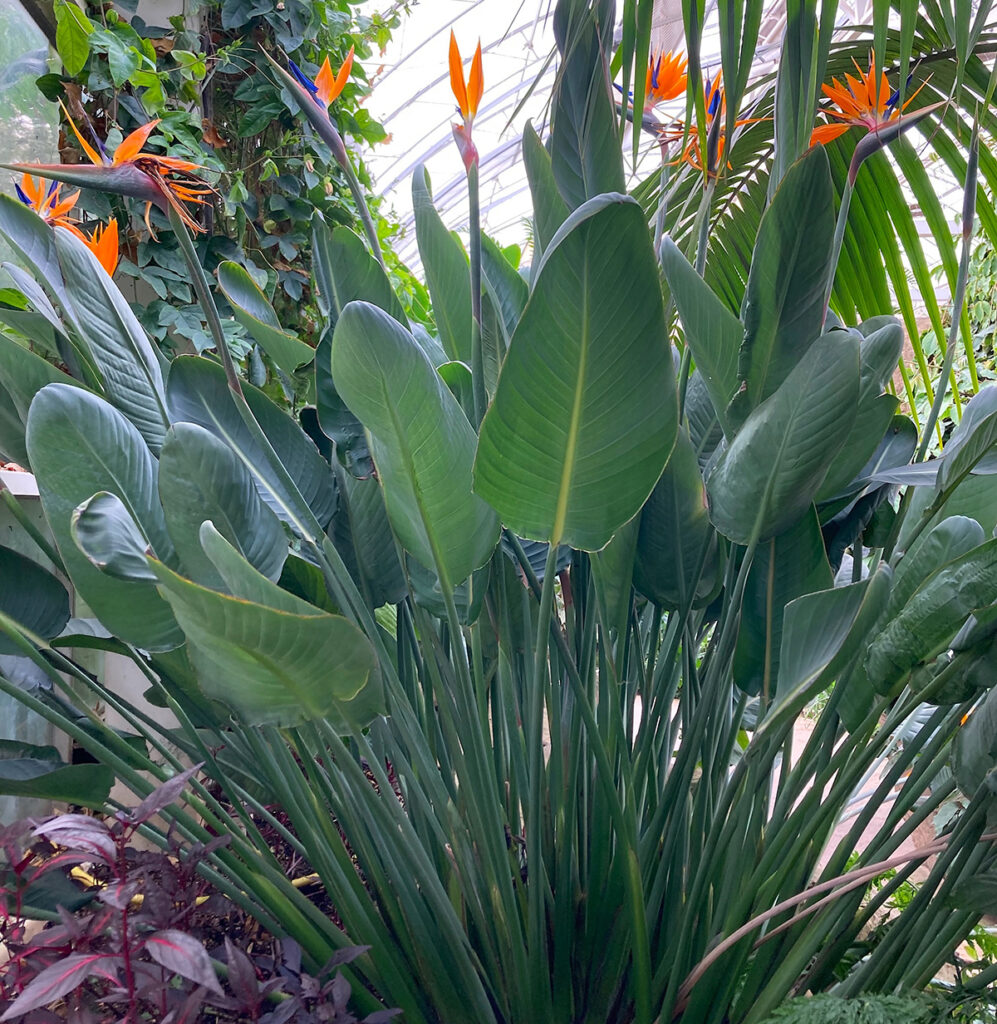
Birds have a special relationship with Strelitzia; their weight on the flower’s perch causes the ‘beak’ to open, covering the bird in pollen. Another of nature’s clever adaptations to ensure pollination.
